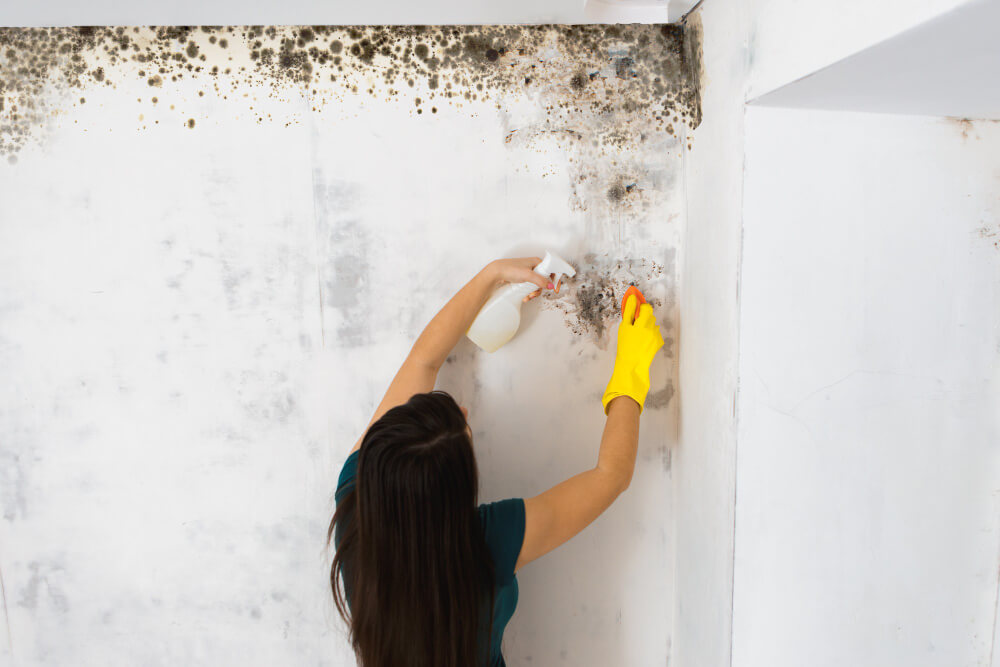
Mold, a common household nuisance, can wreak havoc on your property and health if left unchecked. From unsightly stains to respiratory issues, mold damage poses significant challenges for homeowners. Understanding the primary causes of mold growth is crucial for prevention and mitigation. Moreover, having the right home insurance coverage can provide financial protection and peace of mind in the event of mold-related issues. In this comprehensive guide, we'll explore the top causes of mold damage, how home insurance can help, and essential steps for safeguarding your home against this persistent threat.
Understanding Mold Damage:
Mold is a type of fungus that thrives in damp, humid environments. It reproduces through microscopic spores that float in the air and can settle on surfaces, where they begin to grow and spread. Common types of mold found in homes include Aspergillus, Cladosporium, and Stachybotrys (black mold). Mold growth is not only unsightly but also poses health risks, particularly for individuals with allergies, asthma, or compromised immune systems.
Top Causes of Mold Damage:
1. Water Leaks and Moisture Intrusion: One of the leading causes of mold growth is water intrusion from leaks in plumbing, roofs, windows, or foundations. Accumulated moisture provides an ideal breeding ground for mold spores, leading to rapid proliferation if left unaddressed.
2. Poor Ventilation: Inadequate ventilation in bathrooms, kitchens, and basements can trap moisture indoors, promoting mold growth. Areas with high humidity levels and limited airflow, such as attics and crawl spaces, are especially susceptible to mold infestation.
3. Floods and Water Damage: Flooding from storms, burst pipes, or malfunctioning appliances can introduce large volumes of water into your home, resulting in extensive water damage and mold contamination if not promptly addressed.
4. Condensation: Condensation occurs when warm, moist air comes into contact with cooler surfaces, such as windows, walls, or pipes. This moisture buildup provides an ideal environment for mold growth, particularly in poorly insulated or poorly ventilated areas.
5. High Indoor Humidity: Excess humidity indoors, often exacerbated by activities such as cooking, showering, or drying clothes indoors, can create conditions conducive to mold growth. Without adequate ventilation or dehumidification, humidity levels can rise, leading to mold problems.
How Home Insurance Can Help:
Home insurance can provide coverage for mold damage under certain circumstances:
1. Water Damage Coverage: Most standard home insurance policies cover water damage caused by sudden and accidental events, such as burst pipes or appliance leaks. If mold growth results from a covered water damage event, your insurance policy may help cover the cost of remediation and repairs.
2. Limited Mold Coverage: Some home insurance policies include limited coverage for mold damage, typically as a result of a covered water damage event. However, coverage limits for mold remediation are often capped, and additional endorsements may be required for more comprehensive coverage.
3. Additional Living Expenses (ALE): If mold damage renders your home uninhabitable, your home insurance policy may provide coverage for additional living expenses, such as temporary lodging, meals, and transportation, while your home is being remediated and repaired.
4. Liability Coverage: Home insurance liability coverage may protect you if someone suffers injuries or health issues due to mold growth in your home. This coverage can help cover legal expenses and medical bills if you're found liable for mold-related damages.
Preventing Mold Damage:
While home insurance can provide financial protection against mold damage, prevention is key to avoiding costly repairs and health hazards. Here are some essential tips for preventing mold growth:
1. Address Water Leaks Promptly: Repair any leaks in plumbing, roofs, or windows as soon as they're discovered to prevent moisture intrusion and mold growth.
2. Improve Ventilation: Ensure proper ventilation in bathrooms, kitchens, and other high-humidity areas by using exhaust fans, opening windows, or installing ventilation systems.
3. Monitor Indoor Humidity: Keep indoor humidity levels between 30% and 60% to discourage mold growth. Use dehumidifiers or air conditioners in humid environments, and fix any sources of excess moisture.
4. Maintain Proper Drainage: Ensure proper grading around your home's foundation to prevent water from pooling near the building. Clean and maintain gutters and downspouts to facilitate proper drainage.
5. Regular Inspections: Conduct regular inspections of your home, including attics, basements, and crawl spaces, for signs of water damage, leaks, or mold growth. Address any issues promptly to prevent further damage.
Conclusion:
Mold damage can pose significant risks to your home, health, and finances. Understanding the top causes of mold growth and taking proactive measures to prevent and mitigate mold damage is essential for homeowners. While home insurance can provide financial protection for mold-related issues under certain circumstances, it's crucial to review your policy coverage and take steps to address potential risks. By staying vigilant, addressing water damage promptly, and implementing preventive measures, homeowners can safeguard their homes against mold damage and enjoy greater peace of mind.
We're Here When You Need Us:
Looking for a personalized homeowner’s insurance policy? Look no further!
At Budget Insurance Agency, we understand the importance of protecting your home without breaking the bank. Contact us at 855-218-6308 or request an online quote right now!
